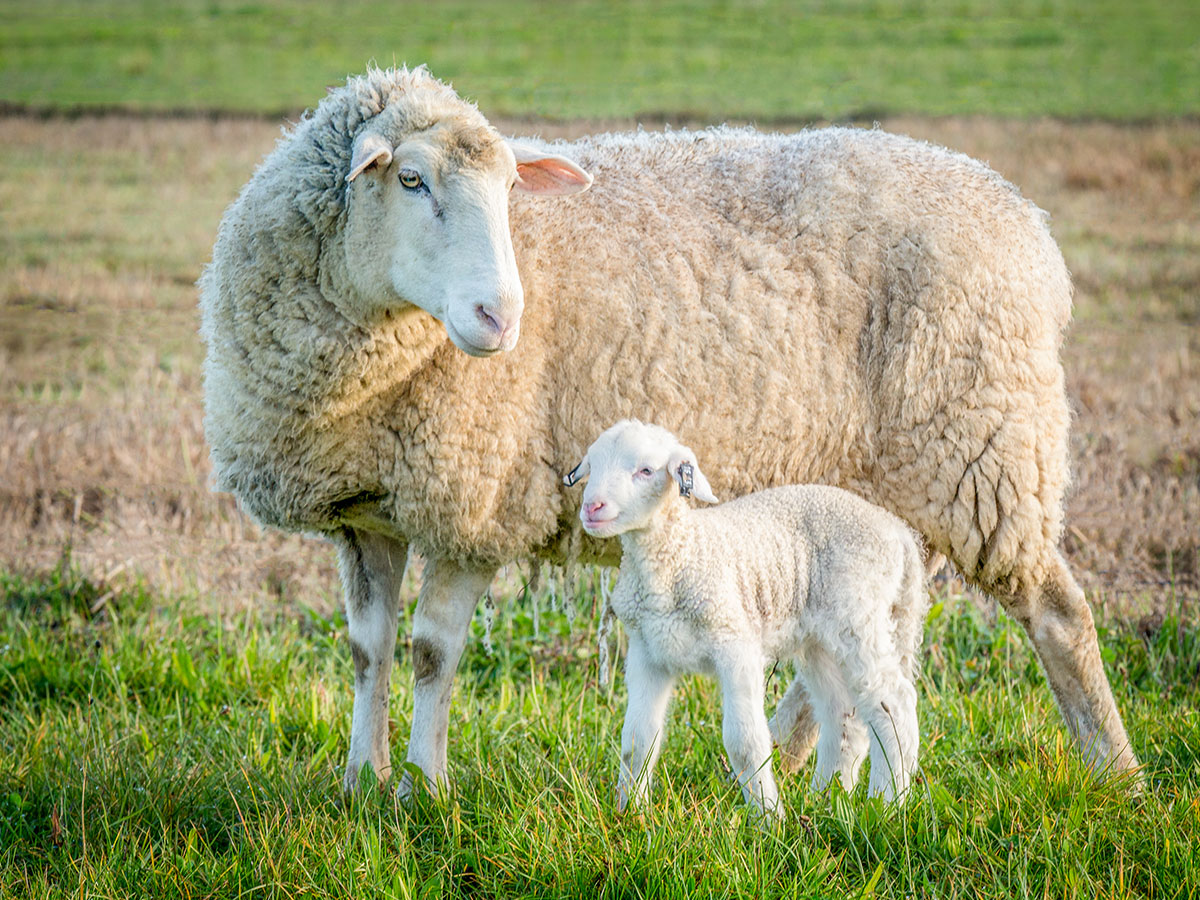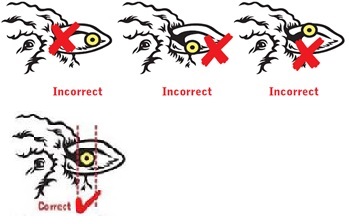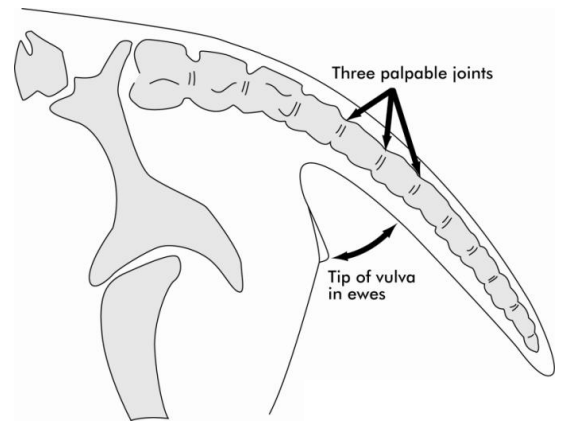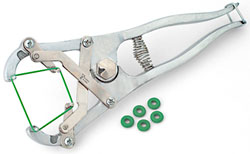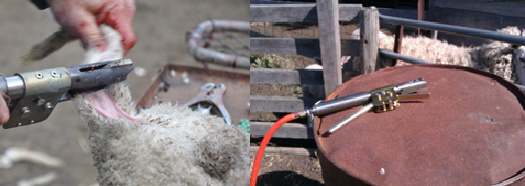What is Lamb Marking?
Lamb marking refers to husbandry procedures including tail docking, castration of males, ear tagging, mulesing, and vaccination. These procedures are an essential part of owning sheep for their health and wellbeing.
Marking should be done between the ages of 2 and 12 weeks, no younger than 24 hours old to allow for maternal bonds to form. Good hygiene is essential.
Pain Relief
As part of any husbandry procedure, ensuring pain relief is essential for the animal’s welfare.
Pain relief is recommended for use during tail docking and castration. Short acting pain relief such as Buccalgesic® or NumOcaine can be purchased over the counter at your vet or local agricultural store, Meloxicam can be prescribed from your local veterinary clinic. These 3 pain relief options are suitable for use when tail docking and castrating using rubber rings. Only Buccalgesic® and Meloxicam can also be used if tail docking and castrating using a gas knife or sharp knife.
Tri-solfen® is also available over the counter however this is a gel spray and should only be used on the wound if using a sharp knife for tail docking or if mulesing. Pain relief is required by legislation for mulesing and if marking animals over 6 months of age and veterinary advice should be sought.
For more information on how to relieve pain, see Pain Relief.
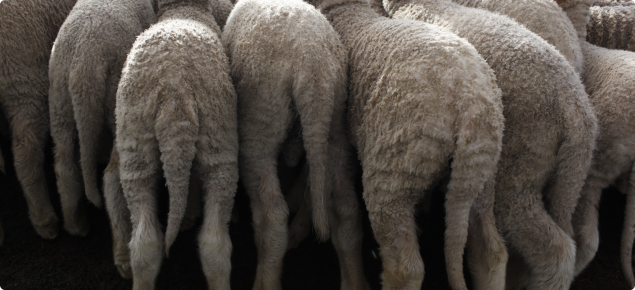
Vaccination
Lambs are generally vaccinated and ear tagged at the same time to reduce handling and stress to the animal. All producers should use 5-in-1 or 6-in-1 vaccines (available over the counter at your local ag or rural store) during the lamb marking period, and then again 6-8 weeks later and every year after.
Most vaccines are designed to be administered subcutaneously and should be injected on the side of the neck, 5cm from the base of the ear. This minimises the risk of any adverse reactions or risk of injecting into valuable cuts of meat.
Ewes should be given their annual booster 1 month prior to lambing to give the lambs some immunity.
See General Sheep Vaccines for more information.
Watch Sheep Best Practice Vaccination and Drenching Instructional Video
Ear Tagging
An electronic NLIS tag with the owner’s PIC needs to be fitted to lambs prior to 6 months of age or before they leave the property.
If owners choose not to ear tag, the year of birth should be recorded for their sheep. Or if ear tagging were to occur later in the sheep’s life, the correct coloured tag should be ordered especially before the sheep is moved off the property. The colour of the tag (determined by AgVic) identifies the animal’s year of birth.
Ear tags should be placed correctly as per the diagram above: close to the head and in between the two veins of the ear. This reduces risk of snagging and losing the tag.
Don’t forget to disinfect ear tags before applying to ear and disinfect applicator between lambs.
You can get the tools for ear tagging at your local ag store.
Tail Docking
Tail docking is not mandatory, however depending on breed and geographical location, it can be an important flystrike management technique by reducing faecal soiling of the wool. Fine wool and wrinkly skin sheep breeds are particularly prone to flystrike. Sheep with less wool and with courser wool tend to dry out easier and offer less of a breeding ground for fly larvae. Yet, they can still just as easily get soiled, especially during springtime when the pasture lacks fibre and the sheep’s faeces turn very soft or even liquid.
You can check your flystrike risk by location, treatments and/or management practices by using the simulator here.
Tails should be docked no shorter than the third palpable joint or the tip of the vulva in ewes, and the same length for males to reduce flystrike. Docking tails too short results in risk of rectal prolapse or vulval cancer.
Common Methods for Tail Docking
Gas Knife or Sharp Knife
The gas-heated de-tailer (hot knife) reduces blood loss in the lambs because the heat cauterises blood vessels in the tail as it cuts.
When using a sharp knife it is important that the bare skin beneath the tail is pushed forward just prior to severance, leaving a flap of skin to heal over the bottom of the cut tail. Severance should occur between the tail joints. Cutting through the bone tends to result in slower healing and so a greater risk of fly strike.
Mulesing
Mulesing is an optional procedure to remove crescent shaped skin flaps around the sheep’s buttocks or breech, which then scars over, and wool does not grow. This is a technique used in heavily wrinkled sheep such as Merinos for blowfly management in conjunction with other fly management techniques.
Pain relief is mandatory if mulesing lambs. Steps are being taken by the wool industry to phase out the need for mulesing through selective breeding, improved welfare techniques for breech modification, nutrition and worm control, chemicals for the prevention and treatment of flystrike.
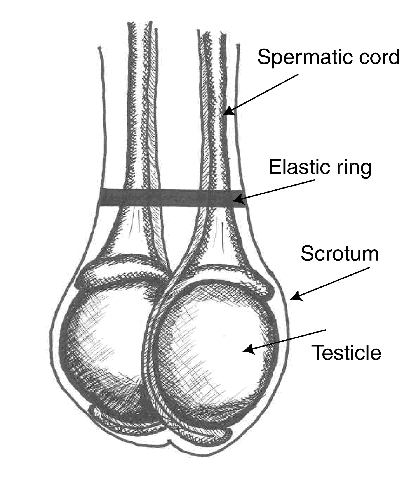
Castration
Castration of males is done to improve the fattening process and meat quality of male sheep, reduce aggressiveness and prevent unwanted pregnancies. However, if males are to be sold to market prior to puberty (3-6months of age), castration is not necessary.
Castration can be done with rubber rings or a sharp knife. Pain relief is highly recommended with a combination of local and NSAID’s having the greatest animal welfare benefit. Local anaesthetics providing relief from immediate pain but are short-acting. NSAIDs provide a longer duration of pain relief but does not address the immediate pain.
Further Resources
See our factsheet on Pain Relief for more information.
Click here to download a PDF version.
For further information, please contact the VFF Stock Sense on 1300 882 833 or by email [email protected]
